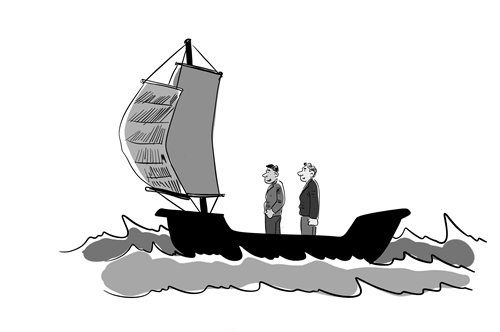By Liu Kecheng Source:Global Times


This week has seen China and the EU come together at a landmark summit that featured discussion at the highest level about how the flow of goods, services and capital between the two economic superpowers can benefit both sides. This is a sensitive subject. The backdrop of testy China-US trade talks and European governments’ increased scrutiny of Chinese interest in strategically sensitive sectors are certainly dark clouds, but between them there is sunlight and hope for common ground.
China’s recent passing of the new Foreign Investment Law, aimed at liberalizing capital flows into the country, signals a watershed moment not only for the Chinese economy, but for Europe and the rest of the world. The likely impact of the changes: $1.5 trillion of inbound M&A over the next decade, a 275 percent increase over the last 10 years.
To understand why China is now choosing to open wider its arms to foreign investors is to understand the evolving nature of China’s consumer economy. Over the last 20 years, the economic livelihood of hundreds of millions of Chinese citizens has improved exponentially, giving rise to a growing middle class that is projected to include 65 percent of all households by 2028. This has ushered in correspondingly radical changes in its consumer economy. China’s retail sector is now the largest in the world and consumers are increasingly demanding higher quality goods for which they are willing to pay a premium.
In parallel to this emerging middle class, there is a significant demographic shift. The number of Chinese people over the age of 60 is projected to grow to nearly a quarter of the population in the next 10 years. That will drive significant demand in less developed sectors such as healthcare, pensions and life insurance. And despite the aging population, more than 200 million Chinese people are expected to start families in the same period, driving huge growth in the real estate, automotive and education sectors.
Alongside these shifting demographics is the launch of initiatives such as “Made In China 2025,” reflecting the country’s desire to move up the value chain and transition toward high-end manufacturing. China is already the world’s largest investor in industrial R&D, as well as the most prolific source of scientific papers.
China’s desire to move up the value chain has so far been supported by a program of outbound investment into foreign assets. That strategy, dented somewhat by increasing concerns in the US and Europe surrounding investments into sensitive sectors such as technology and infrastructure, is now being supported by the liberalization of inbound investment into the country. That creates an alternative route toward an even more sophisticated industrial base and, crucially, one over which the Chinese government has more control.
The economic benefits of this inbound investment will not be easy to unlock and dealmakers keen to invest in China will face three significant challenges: the plethora of partners and deal structures that typify Chinese M&A; the need to bridge the expectation gap in relation to disclosure and negotiation and thirdly, understanding the link between investment opportunities and wider international political trends.
The automotive sector provides a good illustration of the complexity of inbound M&A in China. The sector has evolved to incorporate a complex ecosystem of businesses working in sub-sectors such as electric and autonomous vehicles across a much wider range of sizes, maturity and structure typical in other developed economies. The potential investment routes are correspondingly wide: everything from full acquisition, partial investment, joint venture, consortia, incubation, commercial contracts, and raising money on capital markets. Finding the right advice and insight to navigate these options will not be easy for outsiders, and crucial to any deal’s success will be bringing the right partners together with the right structure.
In relation to differing norms of disclosure, the quality of information provided to acquirers and investors, along with the timing of a deal process, can vary widely in markets like China that are cautiously opening up to foreign investors. They will have to work harder and more diligently to ensure that information is presented in an organized, accurate and transparent way, drawing on every ounce of their international deal experience to determine the acceptable level of disclosure.
Finally, macro-factors such as the US-China trade talks will almost certainly impact the ability to complete inbound investment deals into China, particularly given the new Foreign Investment Law’s language on allowing China to take reciprocal measures against countries that discriminate against Chinese investment. They should become adept at convening networks of senior local businesspeople, policymakers and other stakeholders to ensure continuous dialogue and understanding about the mutual benefits of investment into China.
This week’s summit, and China’s new foreign investment law, present an extraordinary opportunity for dealmaking. Making that a reality will take time, trust and a good deal of hard work. The result: unlocking increased prosperity between China and Europe is worth pursuing.

